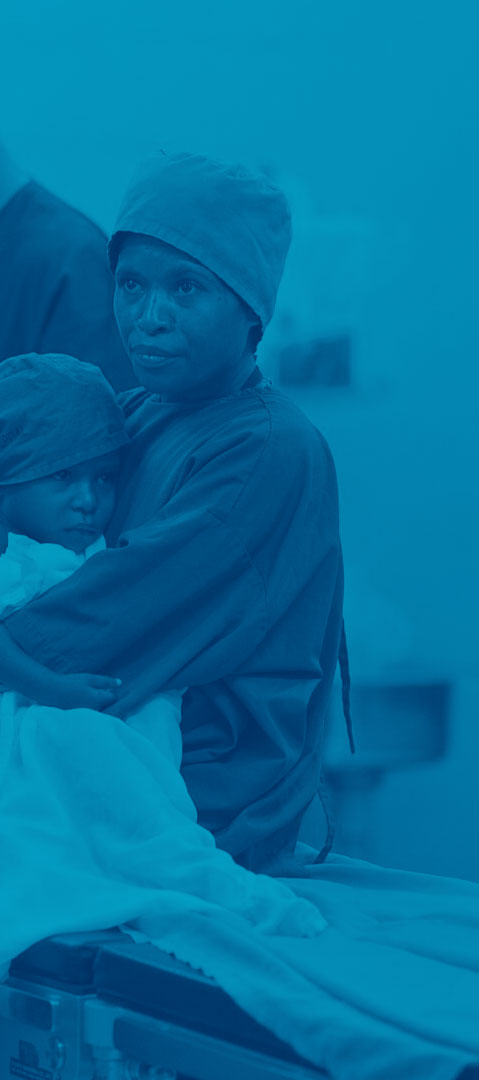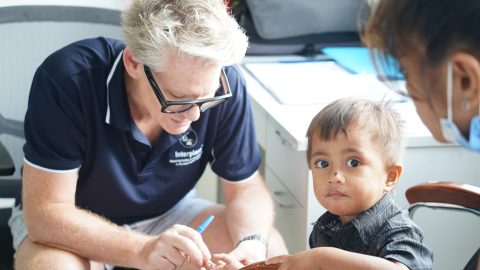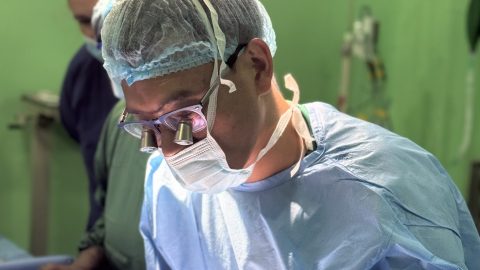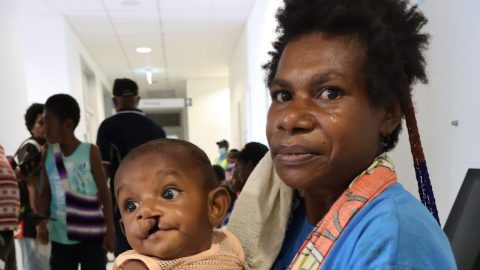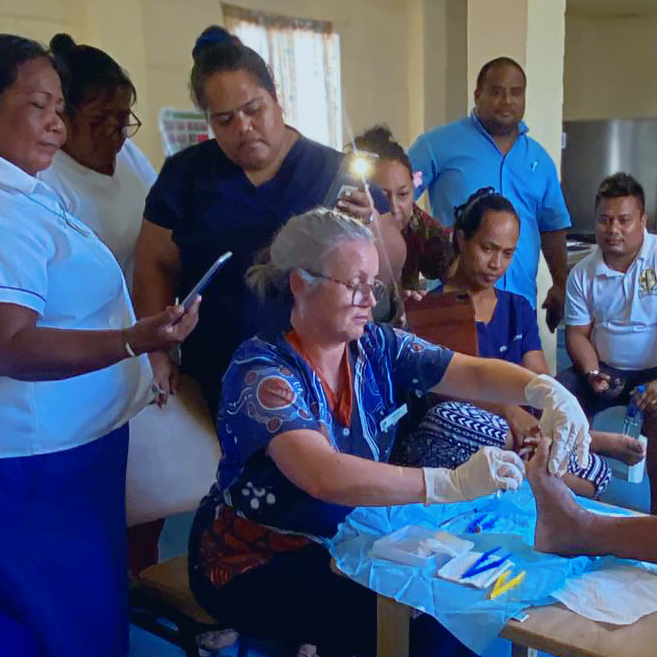
Addressing an escalating crisis
“Half the theatre time lost was to diabetic foot amputations,” was documented in the surgical report from our previous trip to Kiribati in June of 2024.
As the prevalence of diabetes continues to increase for the people of Kiribati, its healthcare system is seeing escalating rates of complications, such as foot wounds. Without early intervention, foot wounds can become infected and may result in hospital admission, amputation or even death.
The Government of Kiribati and the Australian Government through the Australian High Commission in Kiribati have engaged Interplast to support a three-year program to strengthen the prevention and treatment of foot wounds. Similarly to our Luk Afterem Legi project in the Solomon Islands, we will be working with the local government, health facilities and organisations to implement a multi-focused approach spanning:
- Facility development
- Procurement of equipment
- Strategic direction
- Workforce education
- Clinical guidelines.
After a planning visit to collect baseline data and meet with key stakeholders in October 2024, we officially kicked off activities in-country in February of this year.
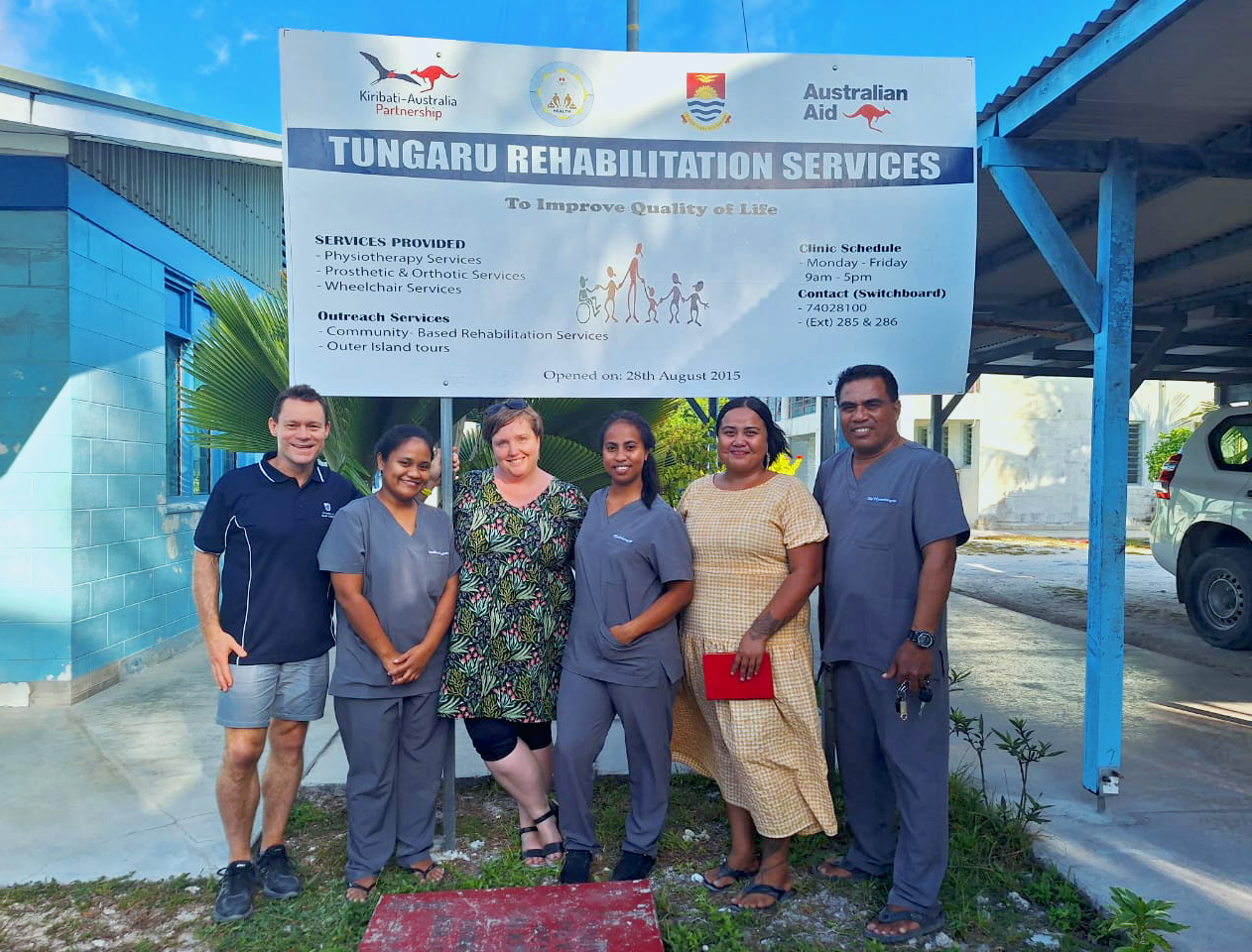
Volunteer Ryan Causby, Former Director of Programs Jess Hill and local project coordinator Regina Teem with local rehabilitation team in October 2024.
Essential training off to flying start
Interplast volunteers Natalie Morgan and Ryan Causby travelled to Tungaru Central Hospital to deliver the first round of training to a multi-disciplinary group of doctors, nurses and allied health staff. This course was originally designed for 15 participants, however as excitement around this program grew, we received a request to increase the numbers to 17.
Over five days, the group were taken through the Keep Moving training package. This course was developed in 2013 by the World Health Organization, Motivation Australia, Fiji National University and the International Society for Prosthetics and Orthotics to support the knowledge and development of health workers in the Pacific.
Participants were able to take an in-depth look at the complications associated with diabetes, how this affects the lower limbs, assessing and classifying foot problems, preventing wounds, managing wounds, and patient education. Ryan and Natalie also led practical demonstrations, with assistance from three patients who were able to immediately benefit from the cohort’s increased ability to manage their wounds.
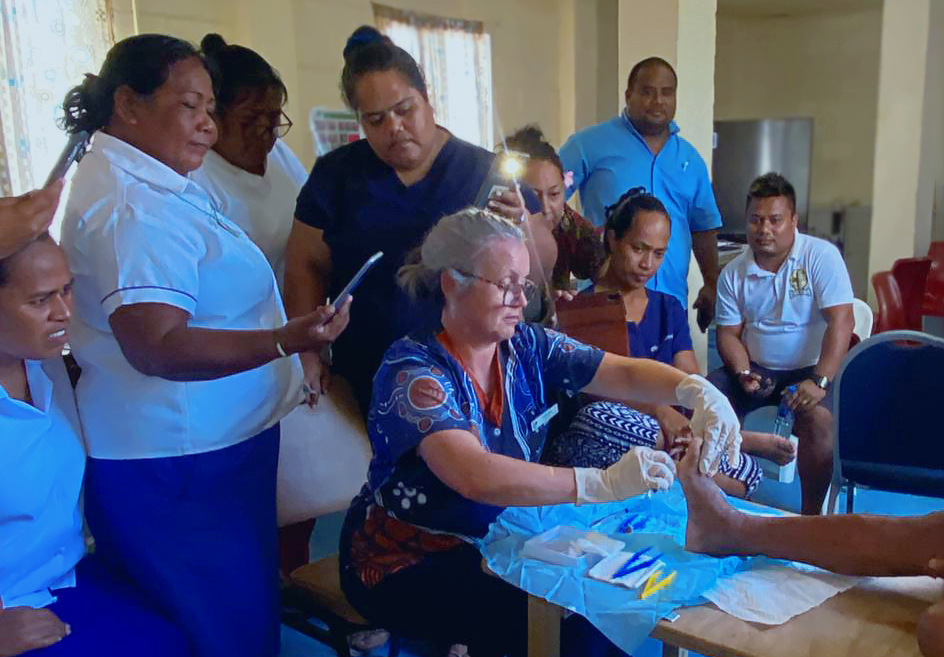
Natalie demonstrates foot wound treatment for the cohort.
Next steps for the program
Over the next few years, we will grow and expand on this training. Interplast plans to deliver Keep Moving to more i-Kiribati health workers later in the year and begin equipping the next generation of educators to lead future training in diabetic foot care.
Additionally, we will be working closely with the Ministry of Health and Medical Services to support the creation of clinical guidelines, service protocol and public health materials. We also hope to support the establishment of a diabetic foot clinic with national procurement and data collections systems, and outreach support for those in remote areas of Kiribati.
We look forward to continuing the critical work of reducing preventable amputations and improving outcomes for the people of Kiribati.

Natalie demonstrates foot wound treatment for the cohort.
Acknowledgements
This program was made possible by the Australian Government through Australian High Commission in Kiribati.
Interplast would also like to acknowledge the Ministry of Health and Medical Services, the Tungaru Central Hospital and the Podiatry Clinic of the University of South Australia. We also wish to thank Natalie and Ryan for generously contributing their time and expertise.
